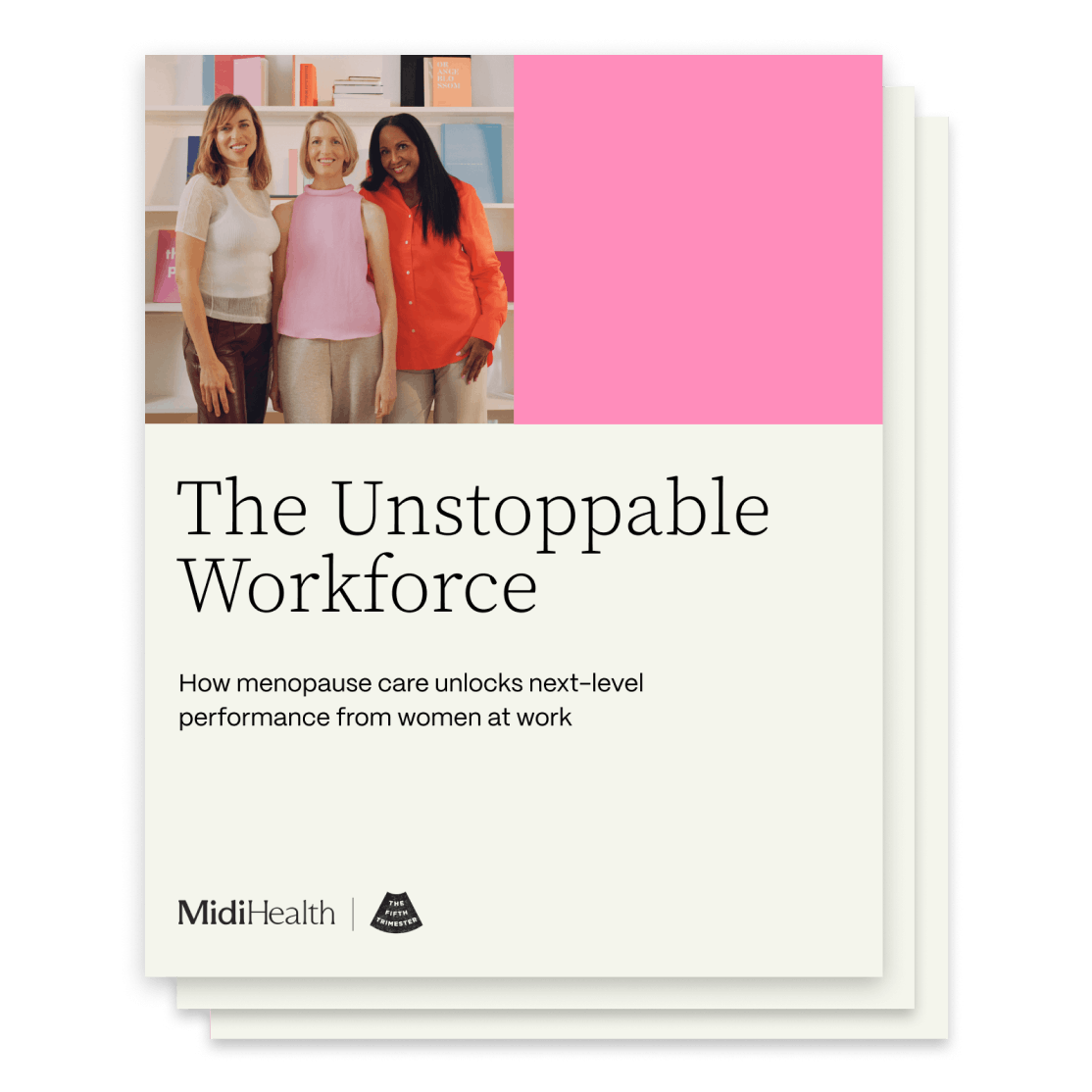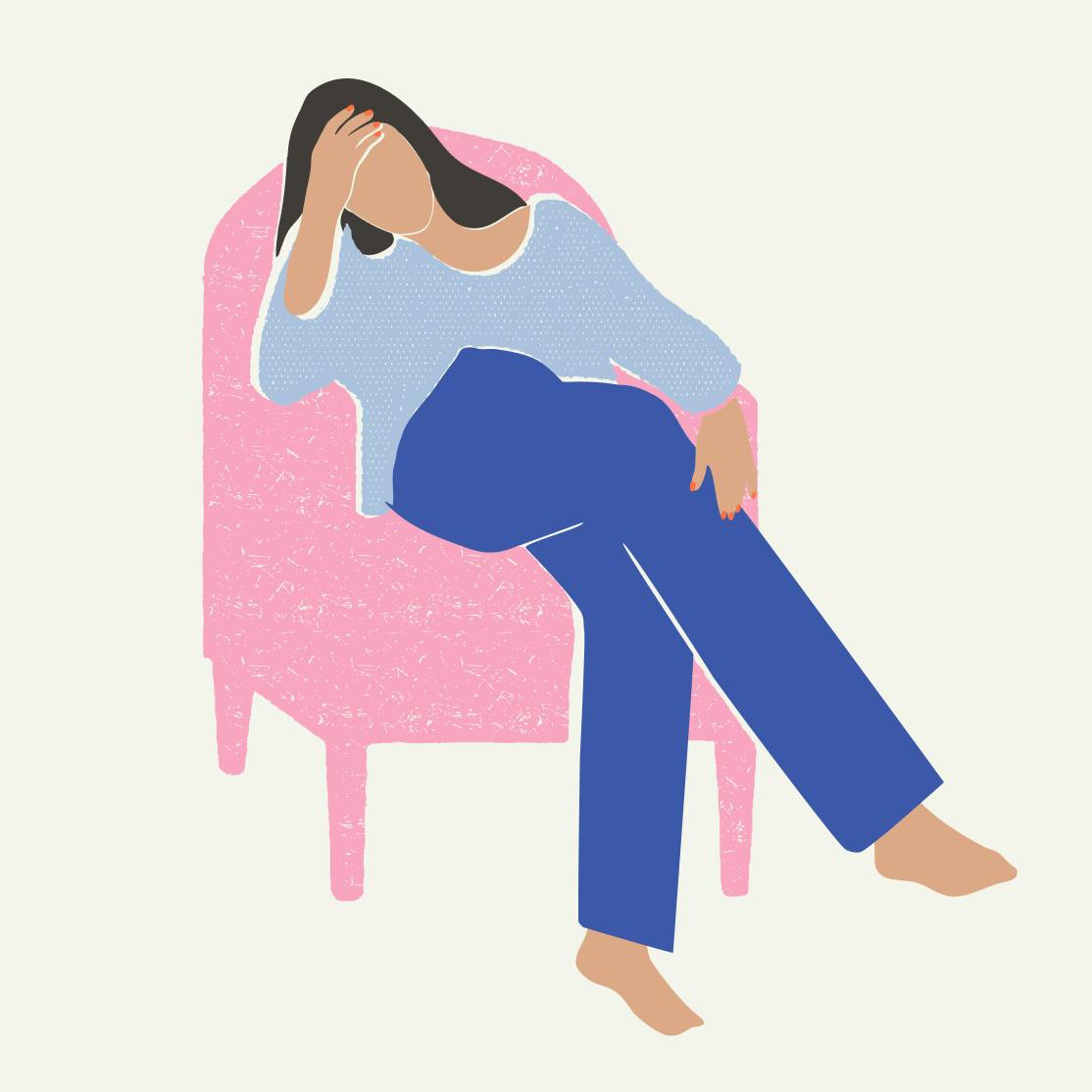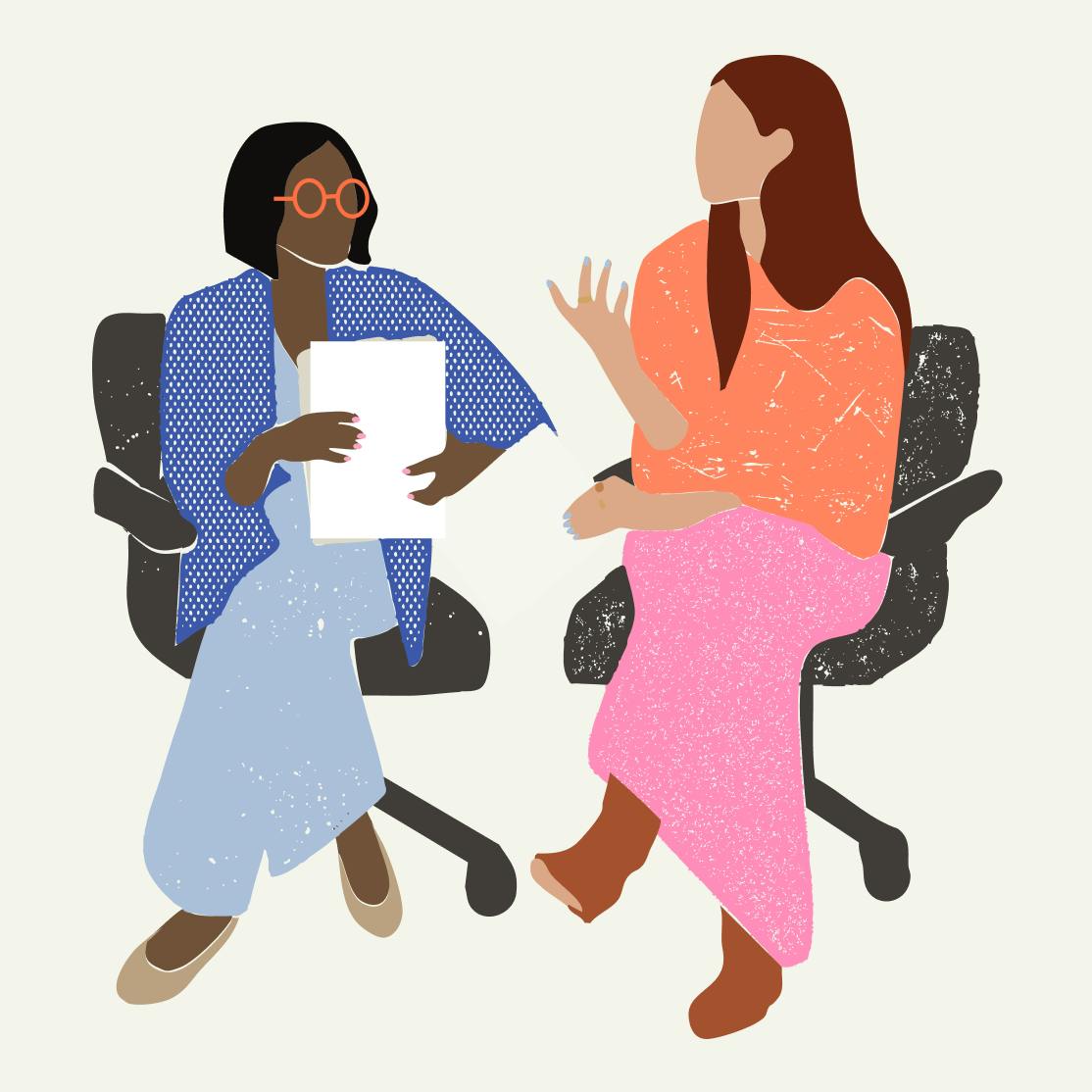Menopause is costing your company more than you think. Around 25% of women in the workforce are underperforming due to menopause symptoms like hot flashes, brain fog, and insomnia—but few companies address this invisible productivity crisis. Studies show menopause-related symptoms lead to increased health costs, missed workdays, and even women quitting their jobs. By providing education, support, and effective care, companies can foster a healthier, more empowered workforce and reclaim millions in lost productivity.
Imagine a large company discovers that one in every four of its employees, at every level and salary range, is underperforming due to a physiological condition—a condition overlooked, some might say ignored—by its own policies? Now imagine there were simple ways to bring that underperforming 25 percent back to maximum productivity.
In reality, that physiological condition is menopause, and its impact on every corporate workforce is enormous.
Just ask Yale researcher Philip Sarrel, MD, professor emeritus of Obstetrics, Gynecology and Reproductive Sciences at Yale School of Medicine, who studies the impact of menopause on women’s well-being and worklife. Between 1999 and 2011, just one aspect of menopause, vasomotor symptoms—also known as VMS, or hot flashes—cost companies some $340 million annually, equalling about $1346 per patient. Women who suffered from hot flashes, which can be harbingers of more serious ailments including cardiovascular disease, made 1.5 million more health visits than women who didn’t experience them; an increase of 82 percent. That amounts to 57 percent more lost work days and a work productivity loss of nearly $28 million a year.
Statistics aside, Sarrel says his results can best be illustrated by the stories of two women at opposite ends of the socionomic spectrum—one a bank president, the other a waitress—who came close to quitting their jobs during menopause. Both women participated in Dr. Sarrel’s menopause research for the NIH. In addition to hot flashes, they also experienced brain fog and irritability, common signs of the estrogen depletion that comes with midlife hormonal transition. The bank president was forgetting important agenda items during board meetings, often going blank on the names of members she had appointed personally. Her hot flashes were so extreme that often she had to abruptly leave the office. The waitress was having meltdowns during her shifts, raging at colleagues and customers alike. Both women were given low doses of estrogen to help assuage their symptoms. Within six months both were not only fully functional at work, but actually more successful in their roles than they had been in years. “Here you had two women at the height of their respective careers who were falling apart,” says Sarrel. With education, support and a little estrogen, “the bank president was more productive than ever and the boss of the waitress thanked me for rescuing his star employee.”
Symptoms that sap productivity
Every day in the U.S. 6000 women hit menopause, which is defined as starting 12 months after a woman’s last period. They reach that milestone, on average, at age 51, but perimenopause, the precursor to menopause, can occur much earlier. This lead-up period, when hormones can fluctuate wildly and symptoms may be at their worst and most unpredictable, lasts four to seven years. At various points throughout their hormonal journey, 85 percent of women will experience menopause-related symptoms, which may include hot flashes, insomnia, anxiety, depression, brain fog, memory loss, headaches joint pain, racing heart, and genitourinary problems, to name a few. The impact on their work lives may be minimal, or major; they might forget business meetings, imagine they have dementia, or fall asleep at their desks. They may sweat so profusely they need to bring an extra set of clothes to the office, or have to excuse themselves from meetings multiple times for bathroom breaks. More than likely, they will also remain silent about their symptoms, white-knuckling through while turning down promotions, quitting their jobs, or just wanting to. Some will feel suicidal.
“These are very real sensations, real heart palpitations and real anxiety and real depression,” says Dr. Sarrel. “It cuts into women’s productivity and their confidence.”
This past January British menopause specialist, Louise Newson, MD, presented results of her survey of 3800 perimenopausal and menopausal women in the U.K. Virtually all of them—99 percent of respondents—said their symptoms negatively impacted their work life, a third of them admitting the interference was significant. Nearly 60 percent took time off of work, just under a fifth of those women for eight weeks or more. After their extended leaves, half of those women ultimately quit or took early retirement, citing reduced efficiency, a lower quality of work, and an inability to concentrate.
Additional research confirms Dr. Newson’s findings: 60 percent of women in five countries said that menopause symptoms affected their work, according to a Vodaphone study. Another study conducted by the UK’s House of Commons reveals that 31 percent of women missed work due to symptoms, eleven percent declined a promotion opportunity, and eight percent quit their jobs. Dr. Stephanie Faubion, director of the Women’s Health Clinic at the Mayo Clinic, recently surveyed more than 5000 women in the U.S. ages 45 to 60. Her results are yet to be published but Faubion told the New York Times, “we were shocked by the number of women (who) reduced their hours (or missed work days) because of menopause symptoms. Think about the women’s lost wages. Think about the companies’ lost profits. This is an economic problem.”
Women feel unseen and unsupported
Women comprise nearly half of the workforce in this country, according to the US Department of Labor, and 44 percent of them are 45 or older. In other words, just under half of the female workers in this country, from CEOs to factory workers, are either in menopause or perimenopause. And most of them will suffer symptoms that last, on average, about 6.5 years. That stat applies to caucasian women; the numbers vary significantly across ethnicities. Black women suffer hot flashes and night sweats the longest, just over 10 years on average; Asian women deal with VMS for the shortest period (although that number varies within the Asian culture); Hispanic women experience these symptoms for an average of 8.9 years.
“There are women who breeze through menopause without impact, but many others are really disabled, and their physicians don’t always take their complaints seriously enough,” says Mindy Goldman, MD, Clinical Professor of Obstetrics and Gynecology at University of California at San Francisco and an advisor to Midi Health, an online platform for midlife women, providing specialized virtual care that’s covered by insurance. “Clinicians who don’t have a deep understanding of menopause may not appreciate the impact. If your body temperature is routinely disrupted, that affects your ability to think clearly. If you can’t sleep, your functioning on all levels will be compromised. If you can’t concentrate, or are dealing with mood changes, work and every other part of your life will suffer. There’s a whole constellation of symptoms, and when inexperienced physicians don’t recognize them all, women are poorly served.”
Women fall through the cracks of the medical system, as well as their company benefits and policies. While most make room for parental leave, death of a family member, family caregiving and even mental health days, only a handful acknowledge menopause symptoms or the toll they take on a large portion of their workforce. Few HR professionals receive training in how to handle menopause issues, or have policies and specific benefits in place to address them. Women are left to advocate for themselves, a fraught, sometimes frightening prospect.
Female leadership takes a hit
Ironically, it is also around this age that working women rise into leadership roles, and the timing couldn’t be worse from a professional perspective. “Women spend one third of their lifespan in postmenopause,” Wen Shen, MD, Co-Director of the Women's Wellness & Healthy Aging Program at Johns Hopkins University Hospital, told the AARP. “For most of us that means some of our most professionally productive years, and being foggy brained or drenched in hot flushes is just not going to work.”
The symptom struggle is real, which could in part account for why we see so few women taking the helm of corporations large and small. Women hold about 25 percent of C-suite positions, according to a recent Korn Ferry study. Writes Jeneva Patterson, in the Harvard Business Review: “If we want to move the needle on the number of women in leadership roles and maintain their valuable contributions to a company’s bottom line...we need to be more open about what menopause is and how it affects both individuals and organizations.” Patterson, client engagement director for the Center for Creative Leadership Brussels, Belgium, has her own story of brain fog slip-ups: arriving late to important meetings, missing flights, and suffering short term memory blips. At age 48, she was convinced she had early onset Alzhiemer’s. Wary of sharing her fears with colleagues, she stumbled on, making excuses. When her symptoms were finally linked to menopause, she writes, “it was a relief and a surprise,” but she had already declined what she describes as a “career enhancing role.”
Symptomatic women like Patterson are often loath to raise the issue in an environment of pervasive ageism. “The toxic intersection of sexism and ageism renders older women invisible, inconsequential, disposable,” says Chris Bobel, Associate Professor of Gender Studies at University of Massachusetts/Boston. “Women experiencing the peri/menopausal transition typically do not seek support because they are socialized to endure discomfort and keep it to themselves.”
Mary*, a 62-year-old flight attendant for a major airline, commonly finds herself in the line for the bathroom with passengers (frequent urination can be part of genitourinary syndrome of menopause, or GSM, related to estrogen decline). “If I said anything about my symptoms to my supervisors, they would offer me early retirement,” she predicts, adding that she feared sharing her real name, because being associated with any menopause-related limitations could put her job in jeopardy.
Treat menopause now, reap higher productivity and improved health in the future
With the growing number of professional women entering menopause each year, the lost dollars and work hours are only adding up. Yet only 1 in 5 women in the US received a referral to a menopause specialist. Of the 60 percent of women who seek medical attention, an appalling three-quarters of them are left untreated. Setting aside their short term productivity, untreated symptoms may reduce their longevity. With the loss of estrogen the entire body goes through a kind of withdrawal, and essential systems can falter. For example, multiple studies show that the risk of heart disease in women over 50 skyrockets from estrogen depletion, a phenomen that can be delayed and possibly reversed with low-dose hormone therapy (HRT) during perimenopause, or soon after menopause sets in. In 2020 the American Heart Association came out in support of HRT for the prevention of heart disease for many women.
Studies show that properly treating menopause may also lower the risk of Alzheimer’s disease, as well as other diseases of aging. “The early loss of estrogen is linked with an increased risk of multiple adverse long-term health outcomes, and dementia is just one of them,” Dr. Faubion told US News And World Report. “Replacing estrogen has been shown to mitigate dementia (and other risks) in women.”
Estrogen replacement can also prevent the kind of bone loss that leads to osteoporosis in half of all post-menopausal women, according to the Endocrine society. Nearly 30% of women over the age of 65 fall each year, often leading to fractures that compromise not just quality of life, but also life expectancy. “Estrogen works directly on cells involved in the buildup and breakdown of bone,” says Dr. Goldman. “Studies show that estrogen is effective for both preventing and treating bone loss.”
Education and training are the biggest obstacles to midlife women getting individualized and appropriate care for their menopause symptoms. The treatment is rarely complicated, but it has been mired in controversy, rooted in a two-decade old study called the Women’s Health Initiative that linked Hormone Replacement Therapy with increased risk of cardiovascular disease, breast cancer and death. But in 2017, a JAMA article posited that the disturbing results of the WHI study were a consequence of factors including the older age of many of the participants and the dosages of the hormones used—but not the hormones themselves.
“The pendulum has swung very widely,” Joanne Manson, MD, professor of Medicine at Harvard Medical School told the AARP. “At one point, hormone therapy was perceived as good for all women, then it became bad for all women. Now it's come to rest in a more appropriate place, which is that it’s good for some, but not all, women. Decisions need to be individualized, depending on the symptoms and the clinical characteristics of the patient.”
Despite the reversal of opinion on hormones, the ghost of those initial results haunts women, as well as many doctors who are hesitant to treat women with drugs they don’t fully understand. What contributes to the knowledge gap? Only a fraction of medical schools include menopause management in their curriculum. Nor do most OB/GYN residency programs include menopause rotations. Amazingly, even women in medicine don’t always have access to the appropriate treatment. A British Medical Association study reveals that 12 percent of female physicians surveyed decided to leave the medical profession due to their menopause symtoms and the lack of support they received from their own medical field. “They are the people most likely to have access to treatment,” says Dr. Sarell, “Yet only 25 percent of them had the proper care.”
How employers can change the equation
So, what can employers do to not only maintain productivity of their menopausal employees, but help them to thrive and possibly live longer? It starts with awareness that from the top down, female employees may be suffering silently with menopausal symptoms that are take a toll on their work, their happiness and their health—and they deserve the same support companies typically give employees who are pregnant or ill.
A recent UK Department of Education Report suggests a multi-prong approach, including: educating employers on the nuances of menopause; training medical professionals to be more aware and sympathetic to the impact of menopause transition; raising awareness for midlife women themselves; designing tailored absence policies and flexible working patterns for midlife women; and fairly low cost environmental changes ranging from desk fans to lighter weight uniforms. “Together, these recommendations might help to erode a culture of gendered ageism and encourage that menopausal symptoms cease to be such a humanistic and emotional burden in middle age,” the report summarized.
Indeed, in a collaboration with Australian educators, Dr. Sarrel and his colleagues found that midlife women who had the support of their supervisors and control over temperature in their work settings reported fewer menopausal symptoms than women without these basic accommodations. “Just cooling the room by just two degrees makes a difference,” he says. “Providing fans on the desk makes a difference. These are small things that are very important.” And the stress relief associated with being understood helps assuage a fear of judgment. “These are small steps, “ says Dr. Sarell. “But essential ones in keeping employees happy and productive.”
A far more significant step? Increasing access to menopause-dedicated healthcare, which is often hard to find. With the pandemic making telehealth a viable, insurance-covered alternative to time-consuming office visits, forward-thinking companies are able to scale expert care for the many treatable ailments that women in menopause face. “I used to see 10 new patients in a week,” says Dr. Goldman, “but on Midi’s virtual platform, I can see so many more—women who have never had a chance to talk to a medical professional about their symptoms, women who never knew they could.”
Dr. Goldman believes that having more women in leadership roles will help to break the taboo around menopause. “Not women in their twenties and thirties,” she says, “but mature women who know that having to go to the bathroom during a board meeting doesn’t mean you are slacking off on the job.”
Andrea Basso, 55, is a senior project manager in the architecture and engineering department at a large medical center in New York City. At her previous job – a small architecture firm – she felt uncomfortable bringing up the heart palpitations she would experience mostly in the evenings. “Every night I went to bed thinking I was going to have a heart attack in my sleep,” she says. “If I spoke about it at work, it was through email.”
Concerned, Basso consulted a cardiologist, who assured her it was “just perimenopause,” but didn’t offer any solutions. Indeed, it was in her current job, where her own boss almost immediately spoke to her about her own menopause symptoms, that she learned about some nutritional solutions (high protein, low carb, no sugar) which helped to eliminate her hot flashes.
Working in a male dominated office in a male dominated field, Basso has encountered many forms of sexism throughout her career. But now that she is “at the head of the table,” she cares little what others think of her. “With two kids and a busy husband and being a puppeteer on so many levels, I don’t have time worrying about someone’s opinion about menopause or whatever I may be going through,” she says.
So when a younger colleague told her about having heart palpitations, Basso openly shared her own experience, and suggested she might be in perimenopause. Her amateur diagnosis proved correct. The two women kept talking—to one another and the rest of their female cohort. “Nowadays, if there is a moment when we’re having coffee, or heading into a meeting, women don’t hesitate to say, ‘I’m having a hot flash.” In a supportive environment, there is no shame.
The Takeaway
- Menopause symptoms, such as hot flashes, brain fog, and irritability, can significantly reduce productivity and lead to increased healthcare costs, absenteeism, and career disruptions for women.
- Research shows menopause-related symptoms cost companies millions annually in lost productivity, healthcare expenses, and employee turnover.
- Nearly half of the U.S. female workforce is 45 or older, yet many women feel unsupported by both healthcare providers and workplace policies that fail to address the impact of menopause.
- Menopause symptoms and their duration vary across ethnicities, with Black and Hispanic women often experiencing longer-lasting symptoms compared to Asian and Caucasian women.
- Employers can enhance productivity and employee retention by creating menopause-friendly policies, offering education, and providing benefits that support midlife women in the workplace.
If you’re in perimenopause or menopause and want guidance from clinicians who specialize in women’s midlife health, book a virtual visit with Midi today.
Hormonal change is at the root of dozens of symptoms women experience in the years before and after their period stops.
Our trained menopause specialists can help you connect the dots to guide you towards safe, effective solutions.
Whether you need personalized guidance or a prescription routine to tackle symptoms—including brain fog, hot flashes, sleep trouble, mood swings, and weight gain—we’ve got you covered.
Midi’s mission is to revolutionize healthcare for women at midlife, wherever they live and whatever their health story. We believe that starts with education, to help all of us understand our always-changing bodies and health needs. Our core values guide everything we do, including standards that ensure the quality and trustworthiness of our content and editorial processes. We’re committed to providing information that is up-to-date, accurate, and relies on evidence-based research and peer-reviewed journals. For more details on our editorial process, see here.
 Jennifer Wolff
Jennifer Wolff



